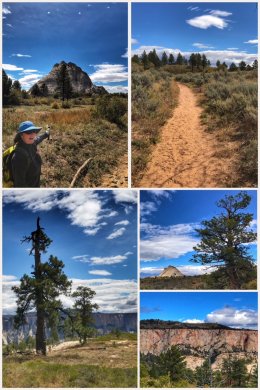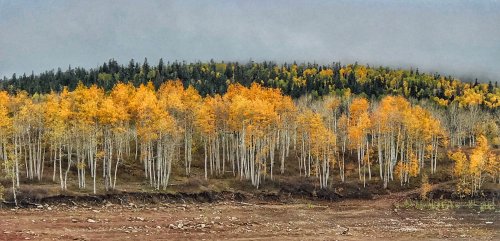 This stop was mostly all about Zion National Park, though we were also happy to spend some time in St. George, UT, which was a great place to restock after being in lots of tiny towns for the last several weeks as we worked our way through the state. (We were overjoyed to shop at a Costco again!)
This stop was mostly all about Zion National Park, though we were also happy to spend some time in St. George, UT, which was a great place to restock after being in lots of tiny towns for the last several weeks as we worked our way through the state. (We were overjoyed to shop at a Costco again!)
If you are planning a visit to Zion National Park, be prepared for crowds in most parts of the year — and be prepared to leave your car parked in Springdale and grabbing the park shuttle to access the most popular parts of the park, including Zion Canyon. Zion is one of the most popular (third, after the Great Smoky Mountains and the Grand Canyon) national parks, receiving 4.5+ million visitors annually.
Still, we were quite surprised by the size of the crowds this late into the year, and after unsuccessfully finding parking inside the park, we decided to head to a section of the park that many people never experienced — by driving to Virgin, UT, and taking the scenic road up to Kolob Terrace.
As with some other national parks, Zion started as a national monument — but with a different name. President Howard Taft established the Mukuntuweap National Monument in 1909. Mukuntuweap is a Paiute word thought to mean straight canyon or straight river — for the Virgin River Canyon. In 1918, President Woodrow Wilson renamed it Zion National Monument… and in 1919 Congress passed a law redesignating it as Zion National Park. (A separate Zion National Monument was established in 1937 and incorporated into the national park in 1956). The name comes from how local Mormon pioneers referred to the area. (Zion being ancient Hebrew for sanctuary or refuge.)
 Today, the park encompasses 147,551 acres — and is located in a unique position in southwest Utah — at the junction of the Great Basin, Colorado Plateau, and Mojave Desert regions. It is a park of beautiful filled with deep sandstone canyons, towering mountains, scattered hoodoos, and flowing rivers and creeks (and waterfalls). Because of the park’s multiple sections, it also has an amazing diversity of plants and animals — and really offers something for every type of visitor.
Today, the park encompasses 147,551 acres — and is located in a unique position in southwest Utah — at the junction of the Great Basin, Colorado Plateau, and Mojave Desert regions. It is a park of beautiful filled with deep sandstone canyons, towering mountains, scattered hoodoos, and flowing rivers and creeks (and waterfalls). Because of the park’s multiple sections, it also has an amazing diversity of plants and animals — and really offers something for every type of visitor.
Our two days driving and hiking in the Zion Wilderness was wonderful. At 124,406 acres, it is the bulk of Zion National Park — and offers additional views of the canyon not typically seen when visiting the traditional parts of Zion. Our 4.6-mile hike on the Northgate Trail quickly became one of our favorite hikes on this trip. The trail is mostly level (with some rocky parts) and wanders through meadows and pine forests, leading to views of Zion Canyon, the Northgate Peaks, and the Pine Valley Mountains.
Of course, there are a plethora of hiking trails — for all levels of hiker abilities and stamina — throughout Zion National Park… with perhaps the most well-known being The Narrows (a hike up the Virgin RIver in the Zion Canyon Narrows, accessed via the Riverside Walk). Other popular hikes include the Canyon Overlook Trail, Emerald Pools Trail, Riverside Walk, Watchman Trail, Angels Landing (via West RIm Trail), Hidden Canyon (via East Rim Trail), Weeping Rock Trail, Kolob Arch, The Subway, La Verkin Creek Trail, West Rim Trail, Wildcat Canyon Trail, Timber Creek Overlook Trail. (Some restrictions apply; for example, wilderness trails are limited to groups of 12.) Beside the national park site, a great tool for learning more about hikes is Joe’s Guide to Zion National Park.
Finally, there’s a third section of Zion to explore: Kolob Canyons, which is accessed off I-15 (at Exit 40). Unfortunately, that area, which even has its own visitor center, was closed because of construction — but scheduled to reopen in November.
Next up we trek through no-mans land Nevada on the Great Basin Highway and Extraterrestrial Highway — on our way back to California.
